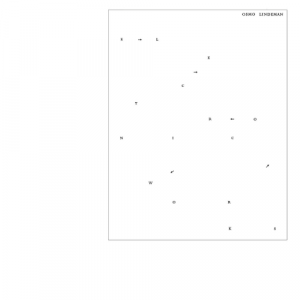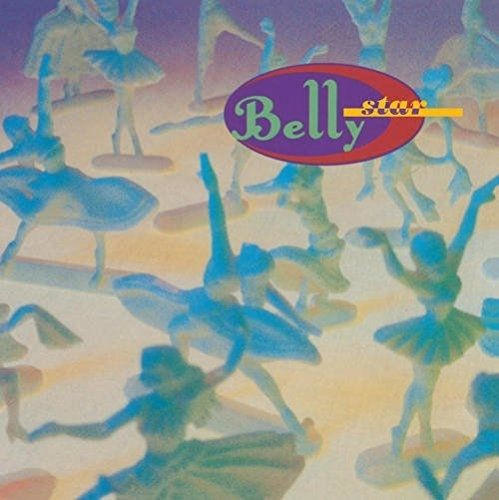 Finnish composer Osmo Lindeman embraced electronic music at the very beginning. Having spent time composing for film in the early sixties, by the end of the decade he was busy investigating what the new medium could offer.
Finnish composer Osmo Lindeman embraced electronic music at the very beginning. Having spent time composing for film in the early sixties, by the end of the decade he was busy investigating what the new medium could offer.
Experimental Finnish label Sähkö has taken this opportunity to compile some of his works and what an extraordinarily prescient series of pieces they are. Spread across four sides of vinyl, the sound of the future is right here and what these chosen pieces must have sounded like in 1969 is hard to imagine.
Moving from long-form kaleidoscopic compositions through live orchestrated sections to snippets composed for television, Electronic Works gives a fantastic overview of a composer who recognised that the very coldness of electronic music reflected the state of the world at that point, but forged ahead anyway, constructing themes that still sound current fifty years later.
The earliest piece here, “Variabile”, dates from 1967 and is a live piece involving the Helsinki Philharmonic. It is an atmospheric blare of borrowed sounds that ebbs and flows as strings chivvy and harry in the distance. Carnal, swollen, impending, doomy portents hang as if a huge wave were about to engulf the audience. Horns and percussion are ready to burst, dammed energy building steadily then relenting, then building once again; a tsunami that never breaks, but you can watch as shingle and flotsam are dragged ever further from the safety of the shore. It has strange tension and gives good indication of what he was trying to accomplish; but from hereafter everything we hear is electronic. A swirl of static electronics sparkle, the beat of stars evolving and overlapping, tones changing as they echo and vibrate. There is an insistent immediacy like a chorus of alarms set off in an abandoned building. You can’t help but think of computer games, but these sounds precede Space Invaders by years. In the same way there are echoes of distant helicopters, their frequency and interaction constantly changing, sounds glistening with an unexpected purity. It must have been so exciting to uncover these sounds, and you can sense his delight and desire to explore, the machinery allowing constant mutation, cyclical motifs overlaid with random pulses and broader swathes of sound.Some start with a greater series of reflected tonal interactions, layers added and removed, allowing a constant evolution. With eyes closed it is a sensory overload and it is difficult to gauge the distances of the sounds. Some are close by, sparkling like bells while others swallow like quicksand in the distance. As tonal experiments, they are way ahead of their time and I keep being reminded of similar contemporary stuff and then children’s TV shows of the ’70s. It is relentless in its movement through patterns, ending in a high-pitched whine that threatens to overwhelm before it is also subsumed by the next thing. For a series of electronic messages bound together, it is surprisingly overwhelming.
Like a series of bubbles bursting on the surface, the sounds never settle. You can sense his restlessness and the idea that he had built this studio so that he could work at any opportunity without even changing from his dressing gown gives an indication of the impetus. The three longest pieces here were viewed by him as experiments or studies and he didn’t recognise them as works in themselves, but instead ask questions “Will this sound work with this sound?” or “Will these two diverse patterns eventually merge”? The abrupt changes, the brief silence before another wave emerges; these give the indication of a mind grappling. Later, smeared voices are placed over a rhythm from the far reaches of space, cavernous echo abounds and unfamiliar sounds dissolve into a conversation. Different sections introduce a greater diversity of fresh yet disturbing noises, the chatter of teeth or the sound of a motor, the rhythm of a car unable to start. There is a even a proto-Suicide shiver of texture and you can feel the flow of electricity as myriad patterns of sparkling tones effervesce. These 1970 pieces are more succinct and you feel that he is becoming more comfortable with the devices and the placing of sounds.The final two selections are accepted by Osmo as actual finished works and here we have a seamless integration; intoning voices stumble across a distant swell, an incantation that evokes hooded figures in a vast edifice vying with a cornucopia of moving sounds that burst and break overflowing with intensity, while finally all this has been banished and civilisation’s echo is left shimmering. Like a sci-fi soundtrack, drops of water highlight a constant stream of dramatic sound arcs while distorted robotic voices leer, distant and inhuman, reflecting Osmo’s own reaction to the parlous state of his world.
As an interesting counterpoint to these longer pieces, a few advertising snippets have been included for Sunkist and Fin-Humus as well as a series of drafts for a television news introduction. All over in a matter of seconds, these snapshots of drones and bleeps show how it is possible to shrink all this experimentation into a bite-sized chunk that would be palatable to the average television viewer.Overall, this is a fantastic introduction to an artist who was constantly evolving his sound and even though it covers only a few years, the progress is impressive; plus there is something about the minute variations and constant progression that offers something new at every listen.
-Mr Olivetti-



